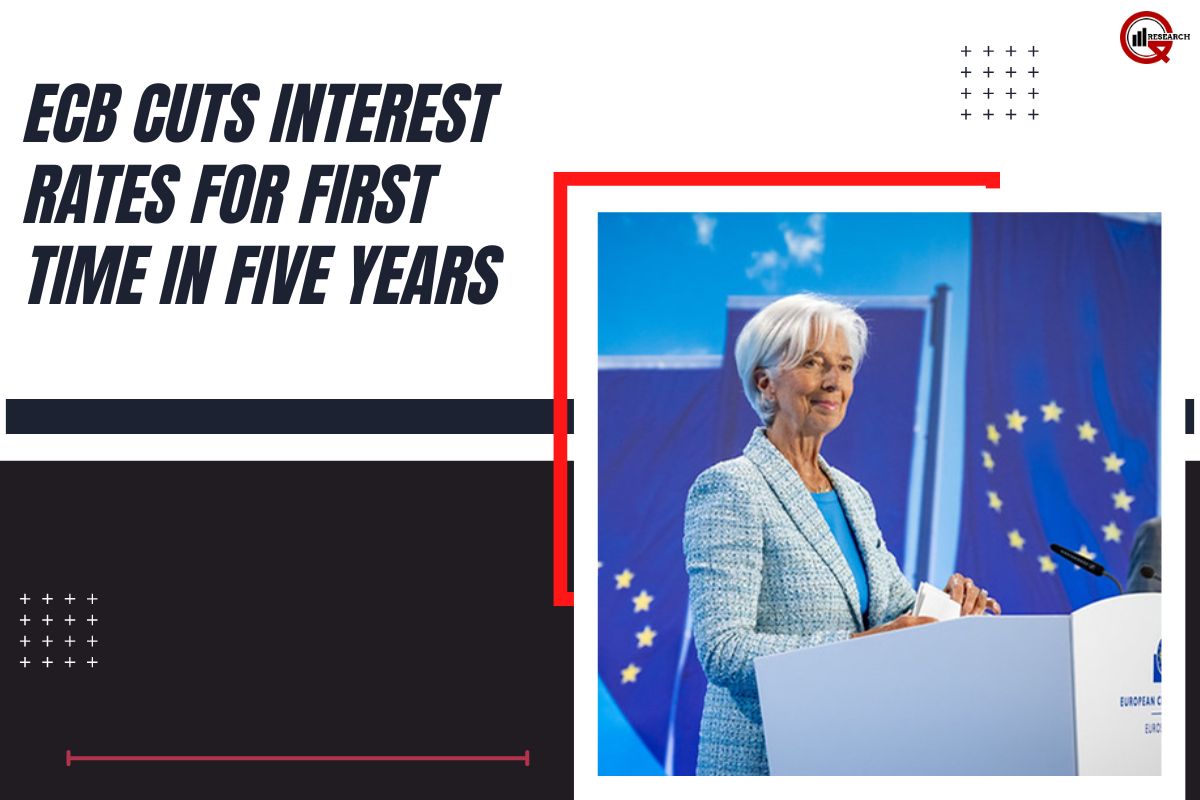(Source – Portfolio Adviser)
On Thursday, the European Central Bank (ECB) lowered interest rates for the first time in nearly five years, marking a significant shift from its previously aggressive stance aimed at combating a surge in inflation. This decision signals a pivotal change in the bank’s monetary policy as inflation nears the ECB’s target of 2 percent. Officials reduced their three key interest rates by a quarter-point, applicable across all 20 eurozone countries, bringing the benchmark deposit rate down to 3.75 percent from 4 percent, the highest in the bank’s 26-year history, where it had been since September.
“The inflation outlook has improved markedly,” stated Christine Lagarde, President of the ECB, during a news conference in Frankfurt. “It is now appropriate to moderate the degree of monetary policy restriction.” However, Lagarde did not provide a clear timeline or number of future rate cuts, leaving some uncertainty in the market.
Global Trend Towards Lower Rates
This move by the ECB follows similar actions by other major central banks around the world. On Wednesday, the Bank of Canada became the first Group of Seven (G7) central bank to reduce rates, with central banks in Switzerland and Sweden also implementing rate cuts recently. These actions reflect a growing consensus among policymakers that the high interest rates used to restrain economies and curb inflation have been effective, and now there is room to lower rates to support economic growth.
In contrast, the United States Federal Reserve remains more cautious, opting to wait for more consistent signs that inflation is under control before considering rate cuts. The Bank of England, however, has indicated potential rate cuts could come as early as this summer, with some officials advocating for easing monetary policy sooner rather than later.
Signs of Stabilizing Inflation in Europe
The ECB’s decision to cut rates for the first time since September 2019 sends a clear message that Europe’s inflation crisis is largely behind it. In late 2022, eurozone inflation peaked at over 10 percent due to soaring energy prices and rising consumer goods costs. Workers also demanded higher wages to offset the impact of inflation.
The ECB responded with its most aggressive rate hike cycle in history, raising the deposit rate from negative 0.5 percent in July 2022 to 4 percent in September 2023. These measures helped reduce inflation to 2.6 percent by May 2024. The decline in energy prices over the past year has been a significant factor in this reduction, along with a decrease in food inflation, which fell from over 12 percent a year ago to below 3 percent.
“Monetary policy has kept financing conditions restrictive,” Lagarde noted. “By dampening demand and keeping inflation expectations well anchored, this has made a major contribution to bringing inflation back down.”
Despite this progress, the ECB remains cautious. While Europe’s benchmark stock index hit a record high before the rate cut announcement, it lost some gains as the bank indicated a careful approach to future rate cuts. The ECB warned that underlying price pressures persist, predicting inflation will remain above the 2 percent target well into the next year. The overall inflation rate is expected to average 2.2 percent next year, slightly higher than the ECB’s projection three months ago. Recent data shows stronger-than-expected inflation, particularly in the services sector, which saw an acceleration from 3.7 percent in April to 4.1 percent in May.
Policymakers are also closely monitoring wage growth, which can lead to higher consumer prices if companies pass on increased labor costs. As Europe navigates this new phase of monetary policy, the ECB’s careful balancing act will be crucial in ensuring sustained economic stability while keeping inflation in check.






